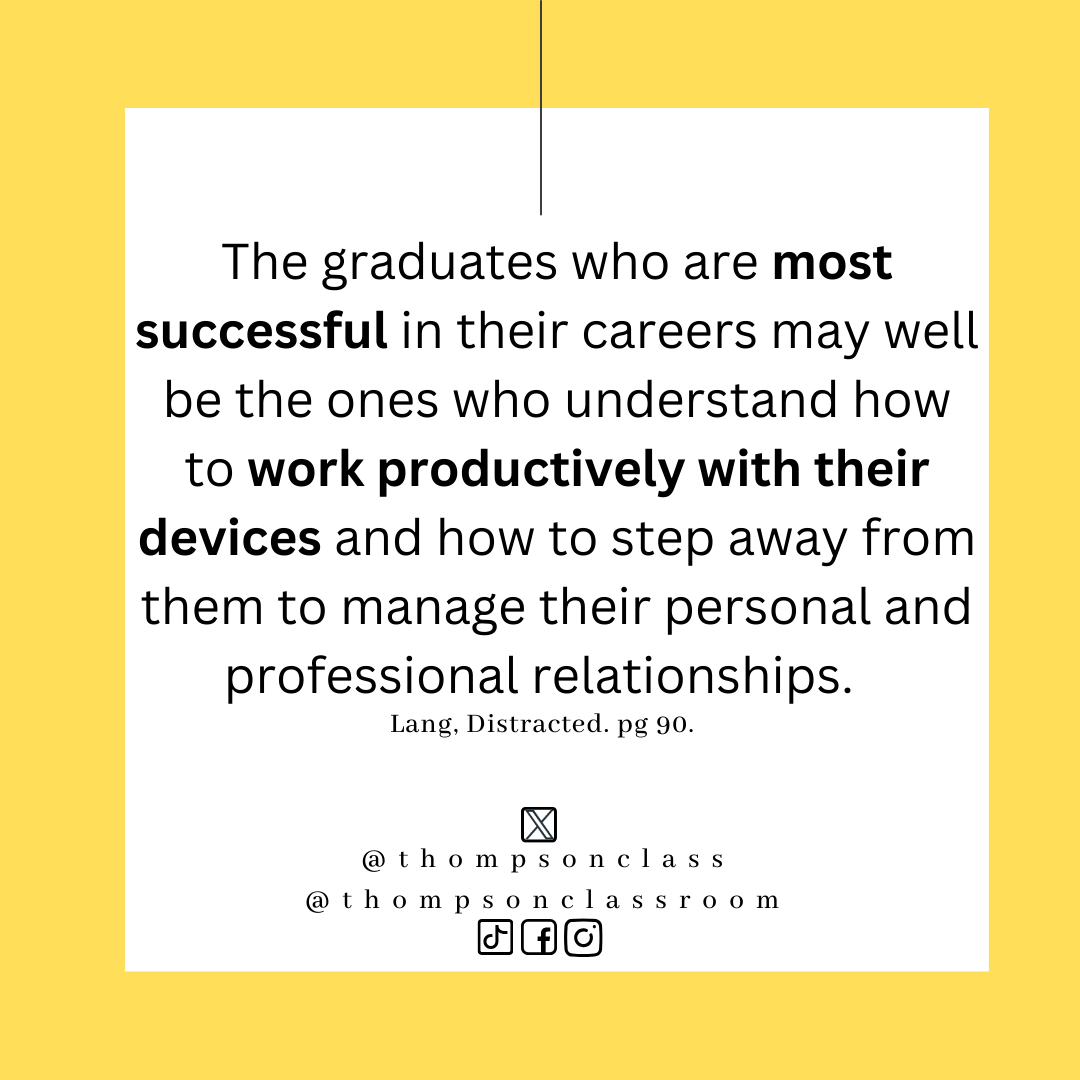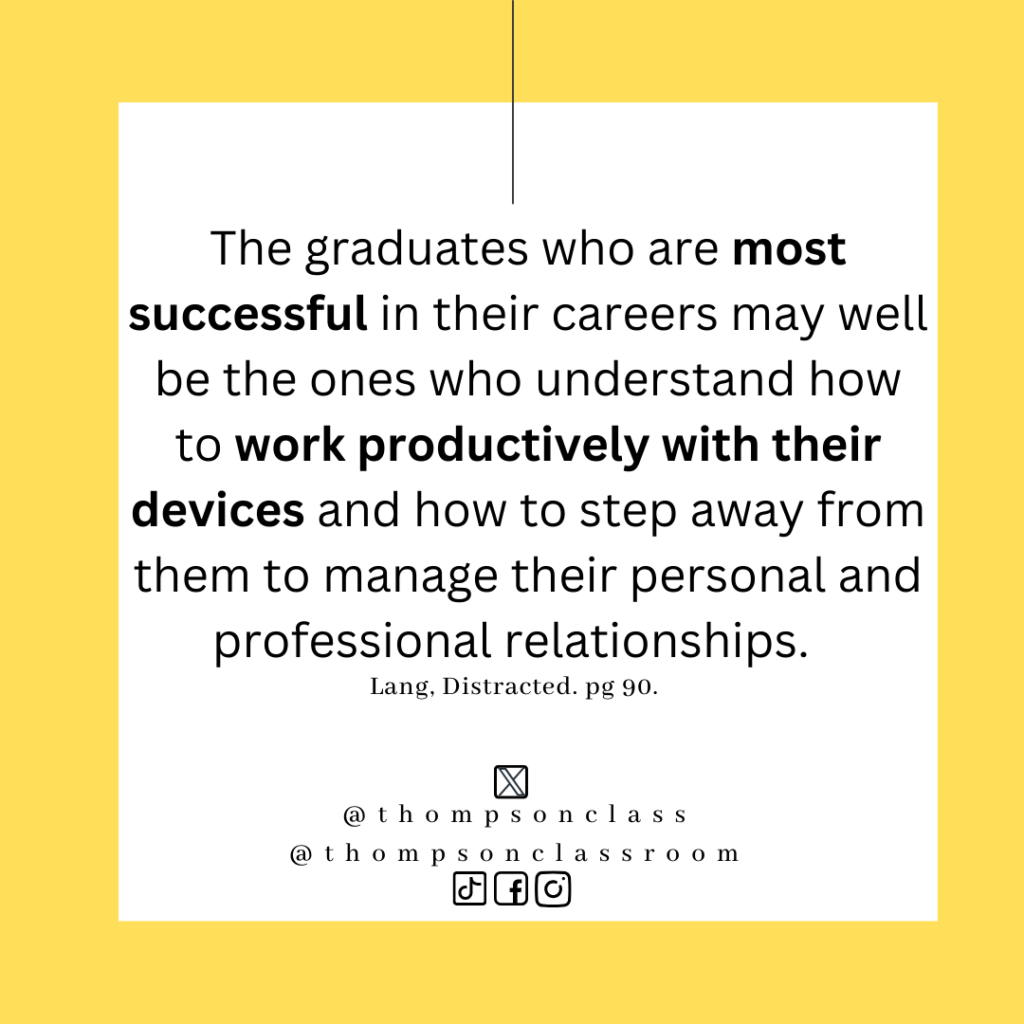Empowering Digital Responsibility: How Schools Can Foster Effective Cell Phone Use Among Students

On Mondays, I share a different ed tech quote on our Thompson Classroom social media pages for our staff to consider.

This week’s quote comes from the work of Dr. James Lang, Distracted: Why Students Can’t Focus and What You Can Do About It. The topic of device use, whether that is school-issued or personal, is on my mind heavily this week as I will be traveling to Winnipeg to work with Manitoba Education on this very thing. While the Cell Phone Debate is still a hot topic for many in the education field, I stand by my statement that schools should be one avenue to model effective use and guide students in how to use these tools efficiently and responsibly. However, due to the fact that these devices are predominately supplied by their caregiver, it needs to be coupled with education for the adult team as well.
The following is a list of skills/topics that I believe students should have an opportunity to learn in regard to the use and management of their personal devices. This list is fluid and in no set hierarchy. It also speaks only to the device use itself and not larger components such as digital literacy, citizenship, and footprint (which should also be infused through the curriculum):
Device Settings
- How to change their ringer/vibration settings
- How to enable “do not disturb” or “focus” mode
- How to enable battery saver mode
- How to change notification settings
- How to change location settings
- How to access device usage stats and well-being tools
Accessibility
- General accessibility settings of the device
- Font-size, vibration options, etc
- How to access and use tools such as:
- Calculator
- Translation
- Real-aloud
- Speech-text
- Dictionary
- Guided breathing/meditation
- Virtual counselor or support
Organization
- How to access and use a calendar or to-do app of their choosing
- For students, this would ideally be the one tied to the school’s LMS but a personal organization option is a good idea as well
- How to enable reminder notifications
- How to enable location-based notifications
- If location services are enabled
- How to use the apps associated with your school programming
- Microsoft suite, Google suite, etc
Device Etiquette
- How to advocate for device accommodations
- What this looks like depends on the age and stage of the student but should focus on a gradual release of responsibility so the student understands not only how to use their device as a tool but how to communicate that in various situations
- Device “storage”
- Where is your device during the day: locker, backpack, pocket, face-down on a desk, etc
- What device use looks like in different contexts
- Classroom activities, presentations, conversations, free-time, emergency
- Purposeful use (ie: placing a reminder in a calendar and then putting it away) versus passive use (ie: mindless scrolling as a form of fidget/stim)
- Media consent
- In public, in school during class time, in school during free time, copyright considerations
What would you add to this list?